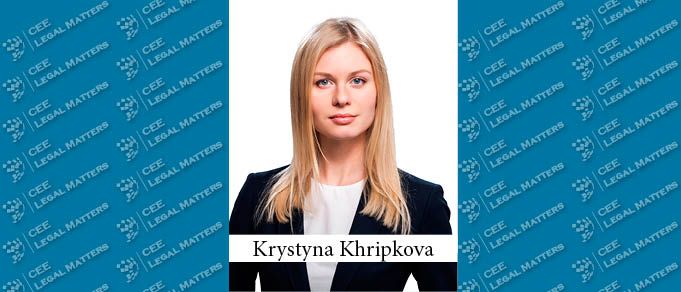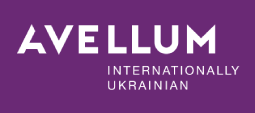Lack of diversity and under-representation that had taken deep root in legal profession worldwide also tarnished the image of international arbitration. The concept of diversity means appreciating uniqueness of each individual, admitting that different strengths come with those differences. Without doubt, diversity in gender, age, ethnicity, race, culture, political and religious beliefs, sexual orientation and socio-economic status is important and may have a game-changing role. Yet, is arbitration community ready to embrace all the good that comes with diversity?
International arbitration has been traditionally concentrated in too few hands that has led to a situation where arbitrators are insufficiently diverse. The main reason is that arbitrators are usually re-appointed from quite a shallow and small pool. The 2015 study of Professor Susan D. Franck and her co-authors shows that the “median international arbitrator was a fifty-three year-old man who was a national of a developed state and had served as arbitrator in ten arbitration cases.”1
I discern some concern that parties and their legal counsel might do a poor job in selecting diverse candidates. In the meantime, co-arbitrators equally share the responsibility for homogeneous tribunals. Notably, in practice some Ukrainian clients are willing to sponsor neither rigorous background check of potential candidates nor going the extra mile to compile a diverse list of candidates. It seems that the demand for diverse arbitrators to adjudicate disputes is often lacking. The current situation primarily reflects the lack of understanding that diversity and inclusion (i) bring quality, efficiency and effectiveness into the arbitration process, and (ii) result in a better-reasoned arbitral award. The better the result, the higher parties’ confidence in the system will be, and the more clients will incline to refer their next dispute to arbitration. The widening of the pool of arbitrators and the increase of transparency around arbitrator availability, performance and attributes will give greater choice, efficiency and fewer conflicts as well as level out imbalance in information available to different parties.2
On the other side of the spectrum, repetitive nominations of established arbitrators create conflicts and impact time- and cost-efficiency of the process, as busy arbitrators usually struggle with managing several parallel arbitrations in a speedy way.
STATUS QUO
There is a tendency among external counsel to appoint established arbitrators, because they associate “the pale, male and stale” profile with quality, qualification and predictability, or to ask established arbitrators to make referrals to other arbitrators. In order to be nominated / appointed as an arbitrator, a candidate must have an impressive and area-specific resume, attain a senior status at a major law firm or university and be recognized among arbitration peers. However, women and minority lawyers encounter difficulties advancing to a partner level in their careers and getting nominations. In addition to biases and stereotypes (as explained below), underrepresentation of, for instance, women in senior positions may be explained by difficulties to combine family and late hours in the office, lack of flexibility and mentoring, and challenges accessing predominantly White and male networks to find new clients.
Under-representation in rosters of arbitral institutions is also dissatisfying. The roster issue is compounded by the network-based and confidential nature of international arbitration that decreases the chances of qualified diverse arbitrators to get a first nomination.
WHY DIVERSITY MATTERS?
Different studies demonstrate that diverse workforces produce better results. The research from Northwestern’s Kellogg School of management shows that diverse groups outperformed more homogeneous groups, because the former are simply smarter and more pro-active. Diversity triggers more careful information processing and tackling problems from a number of different angles. Working in a group with people with different backgrounds may challenge your brain to overcome its stale ways of thinking and to sharpen its performance, might actually alter the behavior of a group’s social majority in ways that lead to innovative and more accurate group thinking.3 A great illustration of how diversity can improve the performance may be the American movie “12 Angry Men” (1957). I highly recommend watching this courtroom drama that tells the story of a jury of 12 White men with diverse backgrounds, as they deliberate the conviction or acquittal of an 18-year old Black defendant on the basis of reasonable doubt.
The other research revealed that groups that included more women scored higher for collective intelligence, thus, performed better than groups with fewer women. Collective intelligence was highly correlated with the social sensitivity (i.e. ability to understand other people’s feelings and thoughts) in the group. ‘Social sensitivity’ skill is equally relevant in both settings, face-to-face and online interactions. The latter are more common and relevant for international arbitration where decision-making process often takes place through emails or video chats. It appeared that women scored higher than men in terms of social sensitivity, therefore, the proportion of women in a group raised its collective intelligence and led to better performance.4
As Jacomijn van-Haersolte van Hof, LCIA Director General said: “Diverse groups bring a variety of perspectives to a task and are better able to cover each other’s blind spots. It is presumptuous and misguided to think that an arbitral tribunal, a team of counsel, or a working group should be any different.”5 Summing up, a diverse tribunal is likely to be better prepared, more attentive to and receptive of the parties’ arguments as compared to a non-diverse tribunal. In turn, this may bolster the chances of rendering well-thought-through procedural decisions, as well as more reasoned, balanced and fair award.
ARE YOU BIASED?
Several factors usually hinder inclusion of diverse candidates into a pool of arbitrators. These include biases and stereotypes against selecting diverse candidates into leadership positions. Biases are automatic mental reactions to members of particular gender, race, age and other groups. Unconscious biases can influence our behavior towards members of different social groups and cause unintended disadvantages for them, but we remain unaware of their influence.
I invite everyone to take the Harvard test (at www.implicit.harvard.edu) to discover your unconscious biases. With the help of the test, you may reveal whether you possess associations of which you are unaware and with which you disagree. These associations correspond to attitudes and stereotypes that many regard as objectionable, including preferences for Whites (relative to Blacks, Hispanics, Asians, or Native Americans) and stereotypes associating men more than women with careers, science, and leadership. The research has repeatedly shown that hidden biases are predictive of everyday social behaviors, such as how we treat others, and the degree to which we are likely to discriminate.
The most famous experiment of blind auditions in the symphony orchestra revealed biases towards female musicians. In a blind audition, the identity of the performer was concealed from the judges to prevent bias. As a result of the introduction of blind auditions to American symphony orchestras, the probability that a woman would advance from preliminary rounds increased by 50 percent. Among those symphonies, “about 10 percent of orchestra members were female around 1970, compared to about 35 percent in the mid-1990s.”6
In view of this fact, there is a proposal for arbitral institutions to put forward gender neutral lists (hiding names of candidates) encouraging clients and legal counsel to make a pre-selection based on the merits / qualifications of a particular candidate listed in his or her resume.
STEPS TO IMPROVE THE IMBALANCE
In the past few years, the awareness of the lack of diversity necessitated incremental change boosted by arbitral institutions and thought leaders. Arbitration community’s will and capacity to constantly reexamine and improve its conduct deserves praise for its efforts. Primarily, much credit goes to international arbitral institutions that are embracing transparency by disclosing available statistics, introducing internal policies related to panel rosters and launching initiatives.
Furthermore, it is time for law firms and independent arbitration practitioners to demonstrate a “shared commitment” to increase the representation of women and minorities in top legal department roles and to improve the procedure for selecting candidates from diverse categories of gender, race, ethnicity, age etc.
There has been a proliferation of initiatives aiming to promote diversity and inclusion (to name a few: the Pledge7; the Arbitral Women Diversity Toolkit8; CPR diversity pledge9; the Equal Representation in Arbitration Pledge Award 201810; and the ABA’s Diversity in ADR Resolution 10511. Importantly, new initiative, like the “African Promise”12, was inspired by the Pledge.
Statistics made available by certain arbitral institutions demonstrate the positive dynamics: the average percentage of women appointed as arbitrators in 2015 was around 10%; whilst the number significantly grew to 21% in 2018 when the Pledge and other initiatives were introduced.
The most innovative initiatives deserve special attention. JAMS13 encourages parties to consider diversity when selecting an arbitrator or arbitration panel, while recognizing that other qualifications are also important. JAMS suggests including the following language into arbitration clauses:
“The parties agree that, wherever practicable, they will seek to appoint a fair representation of diverse arbitrators (considering gender, ethnicity and sexual orientation), and will request administering institutions to include a fair representation of diverse candidates on their rosters and list of potential arbitrator appointees.”14
The ADR Inclusion Network15 recently created a one-page slip sheet (the “Mindbug” sheet) to hand out to the entities and individuals actually engaged in making selections before any list of potential arbitrators is provided to them. This may prompt them to think about diversity as a criterion.
The Arbitrator Intelligence (“AI”) offers a new intel tool aimed at driving diversity forward. The tool helps to overcome the confidential nature of international arbitration that implies difficulties in collecting data on arbitrators’ decision-making history. Getting access to the record of quantitative and qualitative feedback provided by legal counsel on arbitrators’ performance might open the door to hidden crucial information. Looking at resumes or surveys filled in by arbitrators themselves will not help to evaluate a candidate in a rational, objective and systematic way as much as analysis of feedback forms. AI urges arbitration users to provide information on more diverse candidates (gender, age, ethnicity etc.) that will help to create a more robust meritocracy to assist arbitrators from diverse backgrounds.
In summary, I would encourage law firms to take the following simple, but conscious, steps16 to promote diversity and inclusion:
1. initiate discussions regarding the value of diversity inside the firm and in dispute resolution in general;
2. take public diversity pledges available from various institutions;
3. consider diversity and do the necessary research to make an informed / unbiased decision when proposing candidates for appointments;
4. keep an eye out for young and diverse talents and propose diverse candidates when tasked with proposing chairpersons;
5. consider adding the JAMS diversity inclusion language in dispute resolution clauses proposed to clients;
6. encourage arbitral institutions to increase diversity on their rosters;
7. consider distributing the ADR Inclusion Network “Mindbug” sheet;
8. host seminars that educate lawyers about tools to increase diversity and inclusion;
9. invite diverse speakers into panels when hosting seminars;
10. consider offering young lawyers opportunities to participate in shadowing senior arbitrators;
11. keep data, both to measure your firm’s progress and to record the institutional knowledge upon which recommendations to in-house counsel can be made.
Awareness of the above steps means being well-equipped with a toolkit to improve the status quo and make a difference.
1 Susan D. Franck, et al, The Diversity Challenge: Exploring the "Invisible College" of International Arbitration, 53 Colum. J. Transnat'l L. 429 (2015) (available online at: https://scholarlycommons.law.wlu.edu/wlufac/488/).
2 See Diversity on Arbitral Tribunals: Are We Getting There? International Arbitration Survey conducted by Berwin Leighton Paisner.
3 In the other study 200 people were assigned to six-person mock jury panels whose members were either all white or included four white and two black participants. Scientists asked the people to watch a video of a trial of a black defendant and white victims, and to decide whether the defendant was guilty. The study showed that the diverse panels raised more facts related to the case than homogenous panels and made fewer factual errors while discussing available evidence. Diverse groups tended to correct errors, if occurred, during deliberation. One possible reason for this difference was that white jurors on diverse panels recalled evidence more accurately. See D. Rock, H. Grant, Why Diverse Teams Are Smarter, The Journal of Personality and Social Psychology, 4 November 2016 (available online at: https://hbr.org/2016/11/why-diverse-teams-are-smarter?referral=00563)
4 Cartwright-Finch U., The Performance of Teams in International Arbitration: Gender Diversity and the Female Factor, Transnational Dispute Management (TDM). 2015. Vol. 12. Issue 4. P. 14–16.
5 Women Pioneers in Dispute Resolution, 2nd ed. Deutsche Gesellschaft für Internationale Zusammenarbeit (GIZ) GmbH, 2018, p. 218.
6 Blind orchestra auditions better for women, study finds, Princeton University press, 28 November 2000 (available online at: https://www.princeton.edu/news/2000/11/28/blind-orchestra-auditions-better-women-study-finds
7 More information is available at: http://www.arbitrationpledge.com/
8 More information is available at: www.arbitralwomen.com
9 More information is available at: https://www.cpradr.org/programs/committees/diversity-task-force-adr/Diversity-Pledge
10 More information is available at: https://globalarbitrationreview.com/article/1189726/paris-hosts-largest-ever-gar-awards
11 More information is available at: https://www.americanbar.org/content/dam/aba/administrative/dispute_resolution/leadership/aba-resolution-105-summary-and-action-steps.pdf
12 Its signatories commit to ensuring, wherever possible, that Africans are fairly represented on arbitrator rosters and lists of potential appointees considered by parties, external and in-house counsel and institutions. More information is available at: https://researcharbitrationafrica.com/the-african-promise/
13 JAMS is an acronym for Judicial Arbitration and Mediation Services, Inc. (J•A•M•S). More information is available at: https://www.jamsadr.com/Diversity/
14 More information is available at: https://www.jamsadr.com/clauses/#Diversity
15 More information is available at: https://www.adrdiversity.org/
16 See ABA Resolution 105 - Diversity in ADR Summary and Action Steps (available online at: http://mediationsociety.org/wp-content/uploads/2019/01/FINAL-ABA-Resolution-105-Summary-and-Action-Steps-long-URL.pdf).
By Krystyna Khripkova, Senior Associate Integrites




